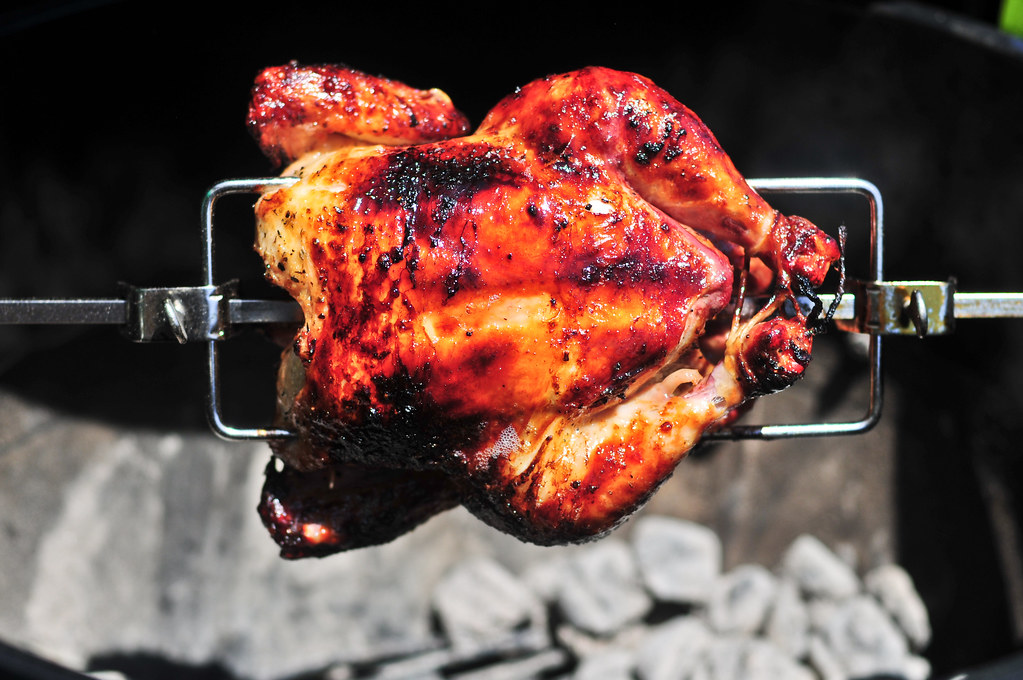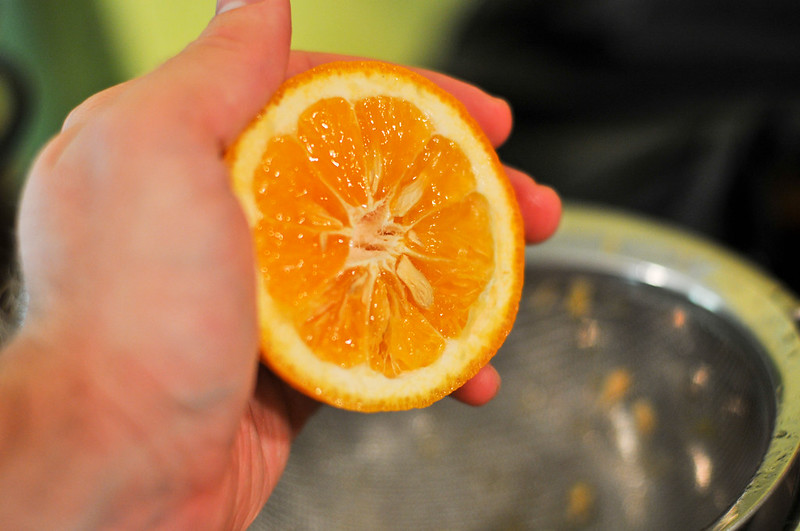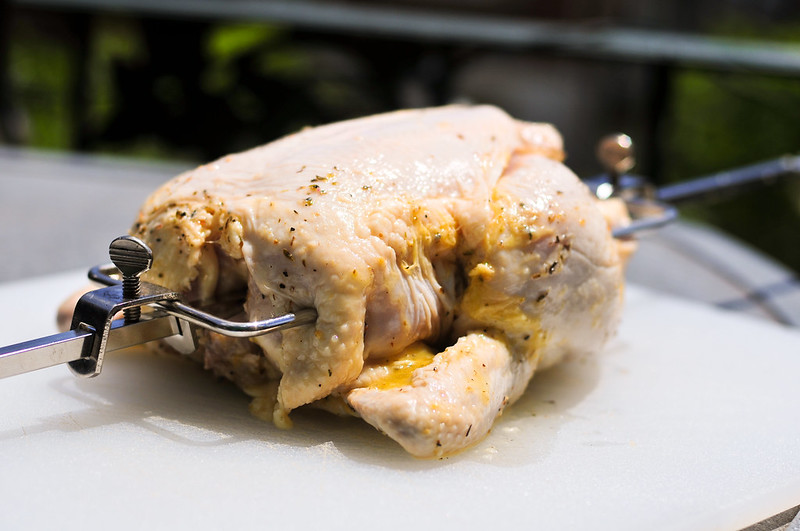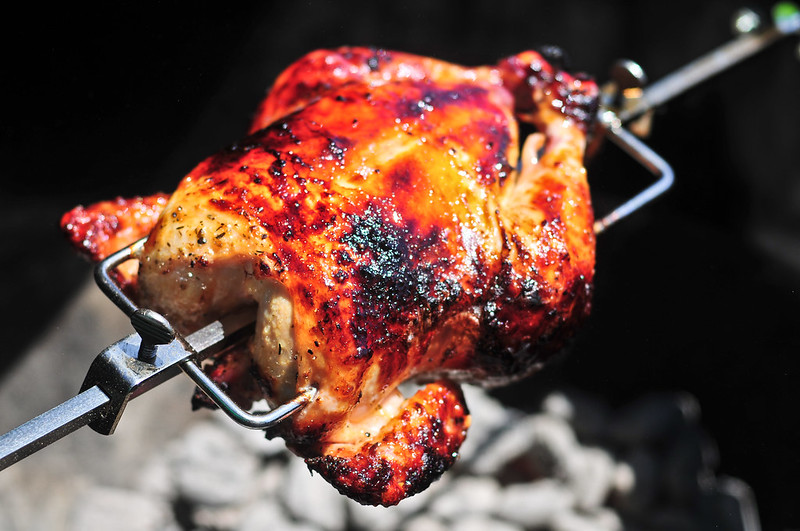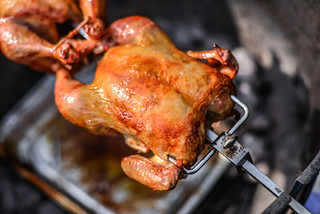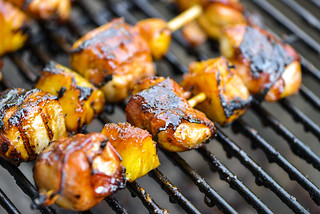Mojo Chicken
I've saved the best for last on what has become almost a month long journey through the Cuban grill. Last week I passed off Mojo—a sour orange and garlic sauce—as a mere dip for tostones. While it preforms that task quite well, it didn't touch upon my true enthusiasm for the sauce and how it creates the absolute most delicious rotisserie chicken I've ever had.
This recipe was born out of my unconditional love for a chicken at a Cuban joint near my work. For years I've been enjoying their juicy rotisserie birds that have a tangy, rich, and semi-crisp skin that brings me into an transcendent state each time I eat it. Since I pull off all the skin and save it to end my meal with, those savory moments have given me plenty of time to consider what makes it so great, but not being too familiar with Latin American cooking, it took some experimentation at home to find that Mojo sauce seems to give me the closest approximation at home.
My original explorations with Mojo had me using equal parts orange and lime juice to compensate for a lack of sour oranges. Since then, I've found a local source of them and I think it's made a pretty big difference to quality and authenticity of my Mojo. Sour orange serves as a base, with plenty of garlic worked into a paste giving the second most distinct flavor to the sauce. Olive oil, oregano, and cumin finish it off, and while I've come across many recipes that also use cilantro, at least for this chicken, I have never added it.
Once the discovery of this sauce was made, the rest of the chicken quickly fell into place. I use about 2/3 of the sauce to marinate the chicken. Due to its heavy acidity, I keep that time to a minimum, 2 to 6 hours tops. This allows some Mojo penetration to the meat, but a lot of the flavor will come from the reserved portion of the sauce.
As the chicken rotates over a medium fire, I brush on the remaining sauce on about every 20 minutes. This, along with the rendering fat that's self-basting the bird, combines to create the beautifully colored exterior that makes this so irresistible to me.
Of course, as with most rotisserie chickens, the meat is pretty excellent, but as I look at this photo of the finished bird, its those little black patches that really has my mouth watering. The strong acidity of the sauce brings an enormous amount of flavor here, with the bite of garlic still packing a punch. The darkened parts are where this combination meets some crispness, with a crunch that holds all the flavors of heaven. Ok, I can't take it any longer, I am out to fulfill upon all of the desires that writing this post has brought on and grab a chicken for lunch.
You Might Also Like
Comments
-
Mike This, if nothing else, is the reason to have a rotisserie. Glad you've got your Mojo workin' !
-
Keeley I don't have a rotisserie, but I'd like to try a variation on this recipe. I've been considering doing pork or chicken mojo-style and I assumed that it would be impossible to find sour orange juice.
Yesterday I found bottled "bitter orange" juice in the Goya aisle. I know it's not fresh, but apparently it's authentic and can be used for these recipes. We'll see...
I'll post the results on my blog. :) -
Josh @Keeley You can try the bitter orange. Given a choice between the fresh orange/lime juice combo and bottled sour orange, I'd probably choose fresh though...fresh is usually better. Good luck!
-
Chris I just saved this to my database to try. First I have attach my rotisserie to my new cooker.
-
Liz I don't usually comment on these recipes but I have to say this was the most delicious juicy chicken I have ever cooked on a BBQ. I didn't end up putting it on the rotisserie but placed it in a roasting cradle inside a tinfoil dish and basted it and it came out looking very similar to the picture and absolutely delicious. Thanks for all the tips. We don't have easy access to sour oranges in New Zealand but used your tip of mixing orange juice with lime juice and that worked well.
-
Norm Ninnes Did the charcoal chicken to the letter and turned out just right…good recipe
-
Doug Hi: I always brine a bird before putting it on the grill. Can you brine this first before the marinade? And if so, would you just wet it or dry it?
-
Josh @Doug You could brine this and then pat dry before putting it in the marinade, but if you salt your marinade enough, some brining action should occur during the marinating process, negating the need for an initial brine.
